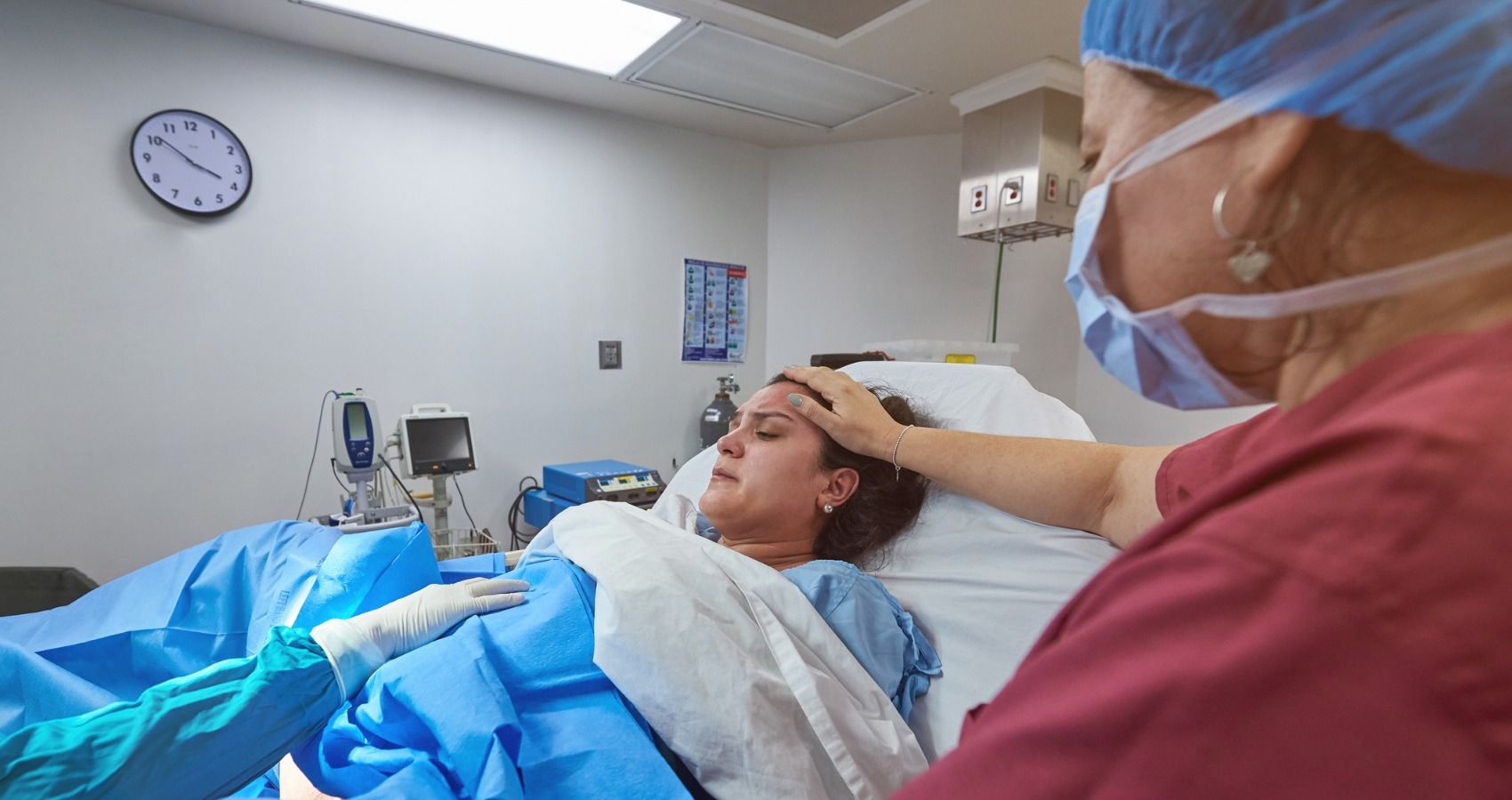Pregnancy and childbirth are incredibly exciting times in a woman's life, but for some, things don't always go as smoothly as they do for others. Placenta accreta is a condition in which the placenta embeds itself too deeply in the wall of the uterus which can cause scary complications for the mother. Issues with the placenta occur in approximately 1 in 2500 pregnancies, according to the American Pregnancy Association, with placenta accreta making up approximately 75% of those issues.
Pregnancy complications aren't something that is widely talked about, but Kim Kardashian helped change that when she opened up about her own experience with placenta accreta after delivering daughter North.
"My doctor had to stick his entire arm in me and detach the placenta with his hand, scraping it away from my uterus with his fingernails. How disgusting and painful!!!" the reality star wrote on her app. "My mom was crying; she had never seen anything like this before. My delivery was fairly easy, but then going through that—it was the most painful experience of my life!"
While the condition can be dangerous, having a skilled doctor who is trained to work on high-risk pregnancies can ensure that both mom and baby are safe in pregnancy through delivery.
Symptoms
Unfortunately, there are little to no signs of placenta accreta during pregnancy, the Mayo Clinic reports. While some vaginal bleeding in the third trimester may occur, it isn't always the case. It can sometimes be detected during an ultrasound or MRI, but not always.
The American Pregnancy Association also points out that the more cesareans a woman has had, the greater her risk of placenta accreta is, with over 60 percent of cases of the condition found in women who have had multiple c-sections. It is also more common in women over the age of 35 and in cases with women who have placenta previa, a condition where the placenta sits lower or totally covers the cervix, the Mayo Clinic states.
Dr. Daniela Carusi, Director of Surgical Obstetrics at Brigham and Women’s Hospital and Assistant Professor of Obstetrics, Gynecology and Reproductive Biology at Harvard Medical School writes that any woman at risk for placenta accreta, "should deliver with a team of experienced doctors who are prepared to manage an accreta and possible hemorrhage, even if accreta was not detected on ultrasound or MRI."
Risks
Placenta accreta does pose potentially serious risks for the baby and the mother. Dr. Carusi points out that in cases of placenta accreta, women will have to deliver often weeks before their due date so all "risks can be managed safely." Kim Kardashian revealed she delivered North at 34 weeks, six weeks before her due date because of her pregnancy complications.
Brigham Health writes that most women will deliver between "3 and 6 weeks early depending on the severity of the accreta." Kardashian also experienced accreta during her pregnancy with son Saint, leaving her unable to carry any more children. "I can’t carry any more kids, it’s the worst," she said during an episode of Keeping Up With The Kardashians. "It’s not going to be happy for me. I had a full break down. I give up." Kim went on to use a gestational surrogate to deliver daughter Chicago and is currently expecting a son via gestational surrogate any day now.
While accreta isn't harmful to the baby itself, early delivery can often come with its own share of issues and complications for both mother and baby. Mothers with placenta accreta may experience severe bleeding during the removal of the placenta, but that's not always the case.
"Accreta can occur in a wide range of circumstances and not every woman will hemorrhage," Dr. Carusi noted. "The likelihood of a hemorrhage depends on the individual conditions of your placenta. During pregnancy, bleeding and hemorrhage are more related to placenta previa (placenta covering the cervix) than to the accreta. An accreta that develops without previa would be less likely to bleed."
There is a greater chance of having a c-section with placenta accreta, especially if it was diagnosed before labor begins. There is also an increased risk of requiring a hysterectomy after delivery, but this is dependent on the severity of the accreta and is not always the only option. As Dr. Carusi points out, "these decisions are complicated and require extensive discussion with an experienced obstetrician."
Treatment
If placenta accreta is diagnosed before delivery, the expectant mother will most likely be put on bed rest for the remainder of her pregnancy, according to the American Pregnancy Association. They also note that steroid shots may be necessary depending on the age of fetus to help develop the baby's lungs in case of an early delivery.
Early diagnosis is important in effectively treating placenta accreta because it allows the pregnancy to be treated effectively by doctors who specialize in the condition.
An emergency c-section may be required if the mother begins to experience uncontrolled bleeding and if the accreta is severe a hysterectomy may be done. Consistent monitoring of the expectant mother and baby in cases of placenta accreta can help ensure a safe delivery for all parties involved.
READ NEXT: Health Agencies Urge People Not To Consume Placenta, Claiming It's Not Safe

